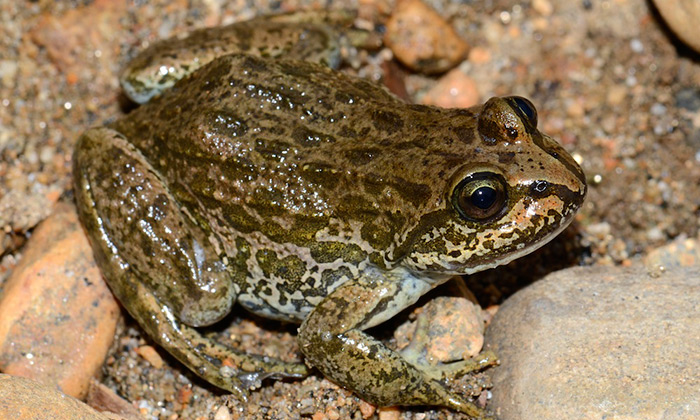The dramatic drop in cost and time needed to sequence the genomes of animals over the past decade has revolutionized the study of evolutionary relationships. But for scientists who study amphibians, it feels like the genomics revolution has passed them by. More than 100 complete vertebrate genomes have been sequenced and released—including about 40 mammals, 13 fish, 9 birds and 9 reptiles. But amphibians? Just one.

That is until now.
An international research team including David Hillis, professor of integrative biology at The University of Texas at Austin, has constructed the genome sequence of a second amphibian—the high Himalaya frog (Nanorana parkeri). Expanding the number of amphibian genomes for comparative study could help scientists better understand one of the major transitions in the history of life—the shift from water to land.
Hillis says there are an endless number of questions that he and others can start to ask now, such as why some groups of animals evolve more rapidly than others.
"If you have just one frog, it tells you a lot about that one frog," says Hillis. "If you have two highly divergent frogs, it now tells you a lot about all frogs."
Having that second genome should also speed up the process of sequencing other amphibian genomes.
"Having a second frog genome allows us to identify all the parts held in common and those act like little anchors," says Hillis. "Those anchors are ways to quickly understand other amphibian genomes."
The results were published last week in the journal Proceedings of the National Academy of Sciences.

















Comments